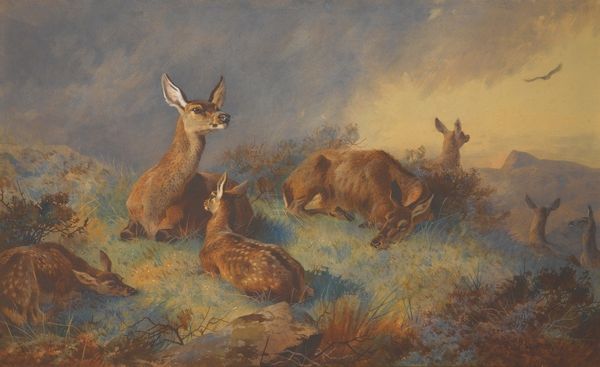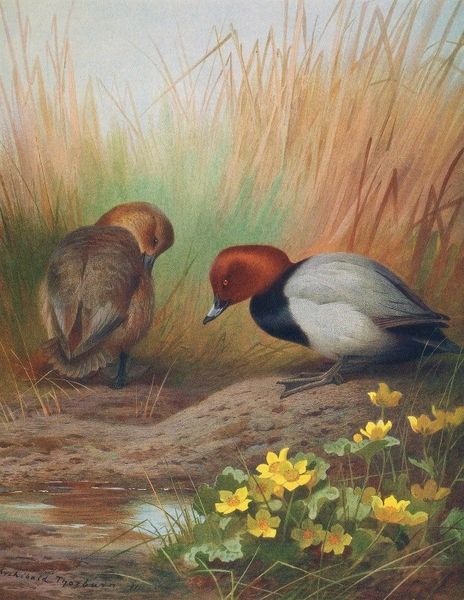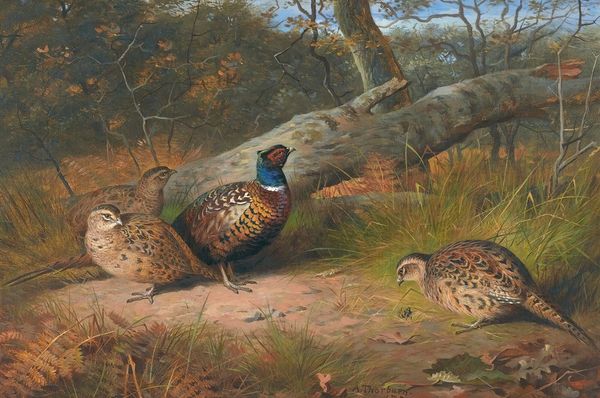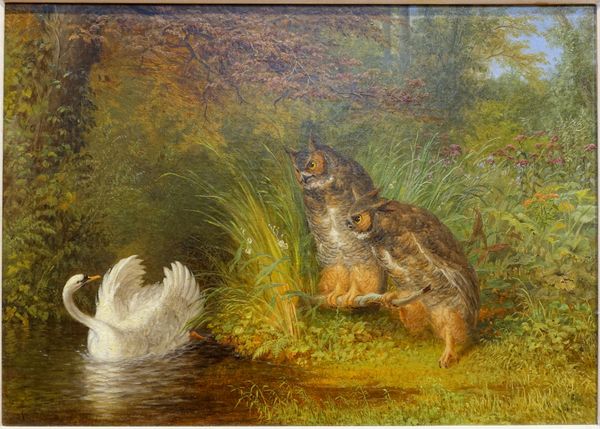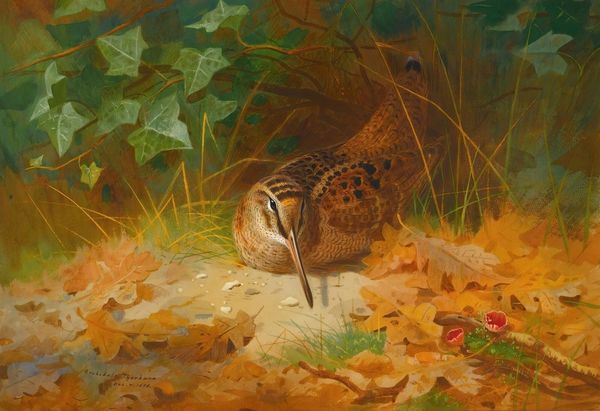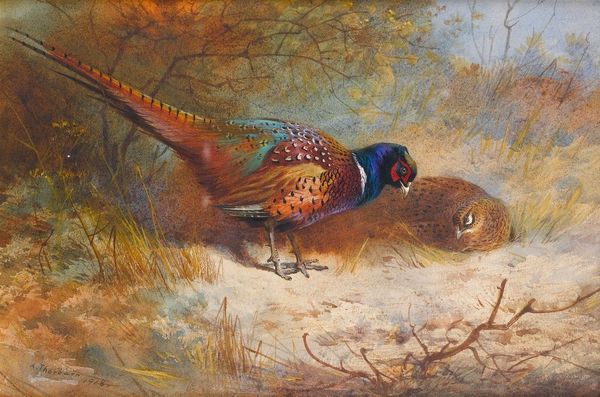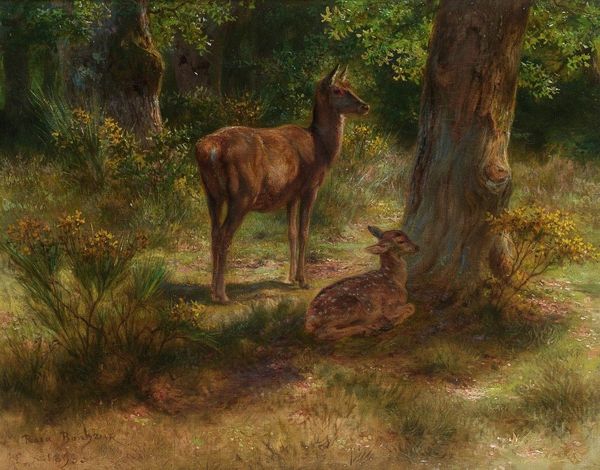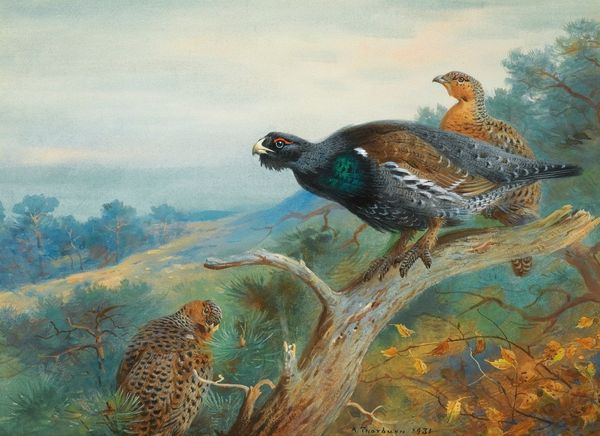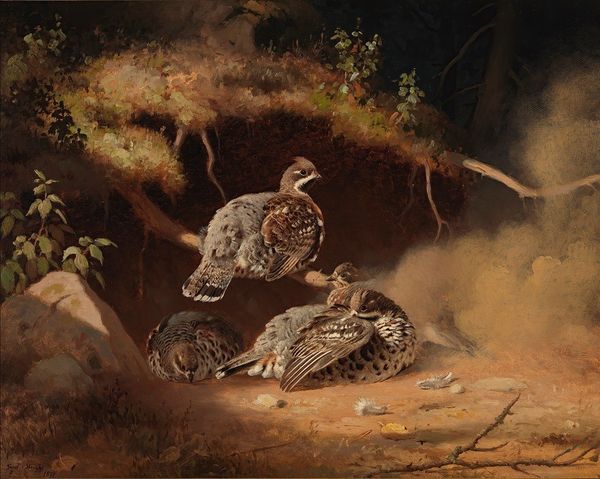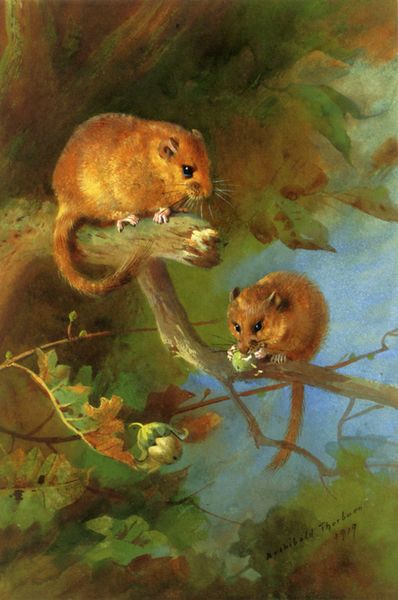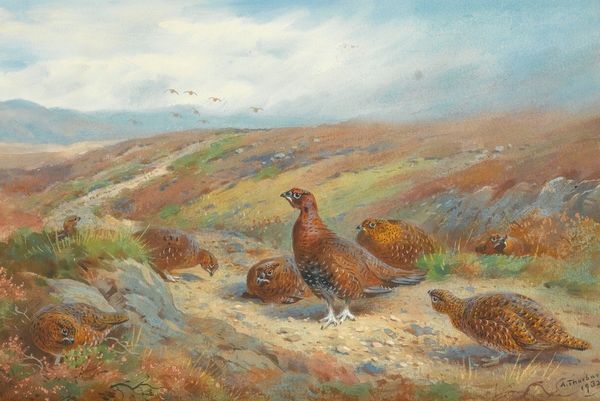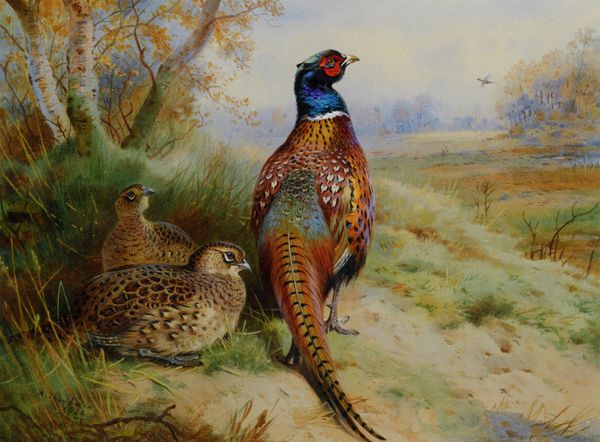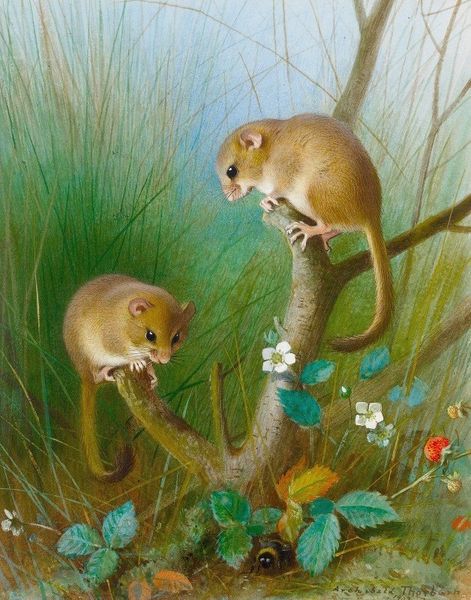
Copyright: Public Domain: Artvee
Editor: Here we have Archibald Thorburn’s "Grey Partridge," painted in 1899 using watercolor. I'm really drawn to the detailed rendering of the birds amidst this seemingly simple landscape. What can you tell me about this piece? Curator: Thorburn's work exemplifies a shift towards naturalism within late 19th-century British art. He’s known for his ornithological illustrations, and this piece highlights that focus. But think about this: what purpose did detailed depictions of wildlife serve at that time? Editor: I suppose it’s part science, part art, documenting the natural world? Was there a rising awareness about wildlife preservation that influenced the artist? Curator: Exactly. We see the rise of scientific illustration coinciding with anxieties around industrialization and its impact on the environment. Images like this reinforced the ideal of a pristine, rural England, often in contrast to urban realities. Thorburn’s art helped to codify how the British public viewed their native birdlife. Editor: So it’s more than just a pretty picture of some birds then; it has deeper roots tied to environmental awareness. The very act of carefully illustrating them seems to imply a value being placed on their existence. Curator: Precisely! It reveals a fascinating interplay between scientific observation, artistic expression, and socio-political concerns of the era. Think about the role these paintings may have played in country homes - shaping a narrative around the landscape and its inhabitants. Editor: It’s so interesting to consider art as part of that dialogue on the environment. Curator: Indeed. Art often participates in shaping our understanding of the natural world. We might even call this work a form of visual advocacy, albeit a subtle one. It underscores the power of art to frame narratives about the environment and the place of humanity within it.
Comments
No comments
Be the first to comment and join the conversation on the ultimate creative platform.
